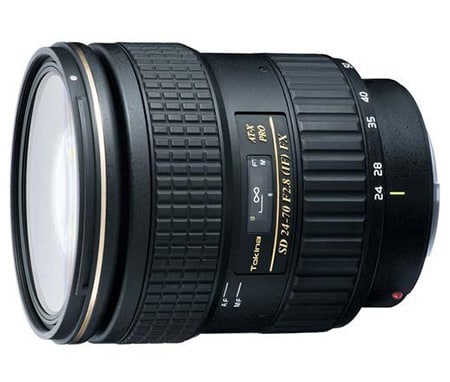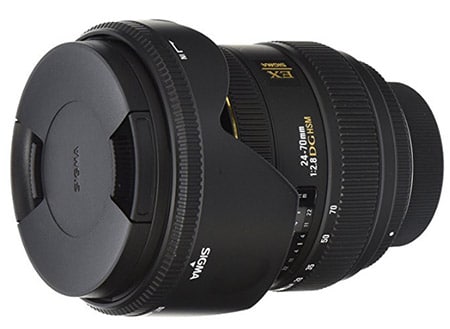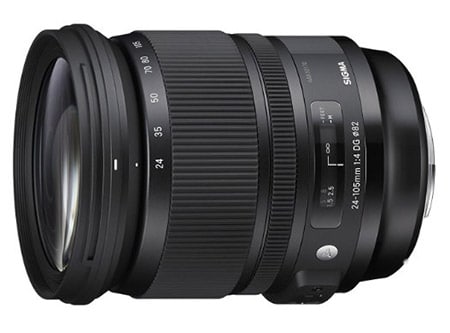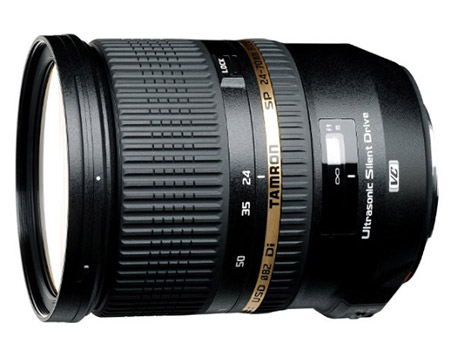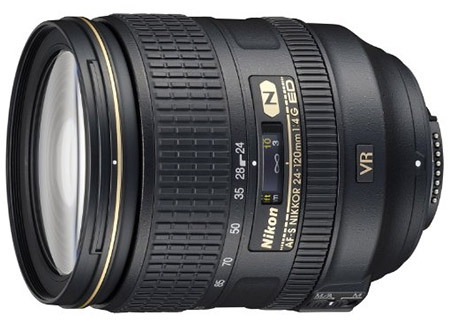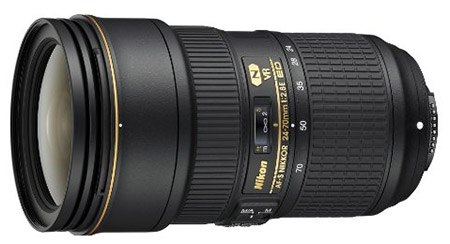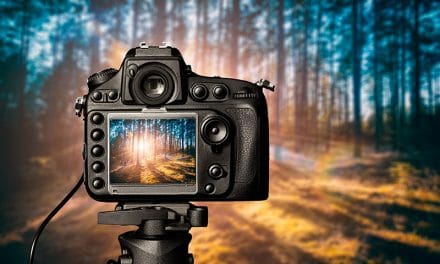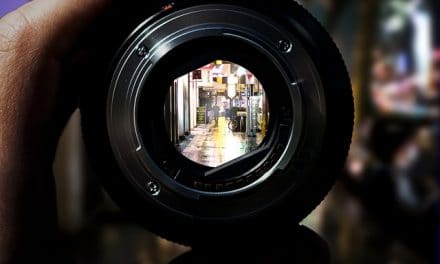A standard zoom lens is a very versatile lens that can be used for all different types of photography. Many photographers use their standard zoom quite frequently, so it is an important part of your kit. Standard zooms often have the ability to serve as a wide angle (although not an ultra wide angle) and a short telephoto, so they can be used in many situations.
On this page you’ll find our list of the best standard zoom lenses available for Nikon users. If you are looking for a quality lens to add to your kit, this list should certainly help.
You may be interested in other articles in this series:
- Reviews of the Best Telephoto Lenses for Nikon DSLRs
- Reviews of the Best Wide Angle Lenses for Nikon DSLRs
- Reviews of the Best Macro Lenses for Nikon DSLRs
- Reviews of the Best Fisheye Lenses for Nikon DSLRs
- The Best Lenses for Landscape Photography
The Best Standard Zoom Lenses for Nikons
6. Tokina AT-X 24-70mm f/2.8 PRO FX Lens
The 24-70mm focal length range is a popular choice for standard zoom lenses, and we’ll see a few others on this list in a minute. Tokina’s 24-70mm is a quality lens at an affordable price. It features a constant maximum aperture of f/2.8, making it easy to get beautiful blurred backgrounds. If you want a 24-70mm lens but can’t afford Nikon’s lens (our top-rated lens), this one is a good alternative.
- For full frame or APS-C sensors
- focal length range: 24-70mm
- aperture range: f/2.8 – f/22
- vibration reduction: no
- 82mm front filter diameter
- weight: 2.2 lbs.
5. Sigma 24-70mm f/2.8 IF EX DG HSM Lens
The Sigma 24-70mm lens is priced comparable to Tokina’s 24-70mm, but we have it rated a little higher for image quality. This lens offers a constant maximum aperture of f/2.8. Like the Tokina lens, it does not offer image stabilization / vibration reduction. This lens is noticeably lighter than the Tokina lens.
- For full frame or APS-C sensors
- focal length range: 24-70mm
- aperture range: f/2.8 – f/22
- vibration reduction: no
- 82mm front filter diameter
- weight: 1.74 lbs.
4. Sigma 24-105mm f/4 DG OS HSM Art Lens
Another popular focal length range for standard zooms is 24-105mm. This lens from Sigma offers high-quality images with a very flexible and versatile range. The max aperture of f/4 is more than enough for most uses, including most landscape photography. This lens also features image stabilization to help with the sharpness of your images.
- For full frame or APS-C sensors
- focal length range: 24-105mm
- aperture range: f/4 – f/22
- vibration reduction: yes
- 82mm front filter diameter
- weight: 1.95 lbs.
3. Tamron SP 24-70mm f/2.8 DI VC USD Lens
Tamron’s 24-70mm is a quality lens that is priced much lower than Nikon’s 24-70mm. The f/2.8 max aperture is the same as the other 24-70mm lenses on our list. Unlike the Tokina and Sigma 24-70mm lenses mentioned earlier, this lens from Tamron features image stabilization (Tamron calls it Vibration Compensation). It is slightly lighter than the Tokina lens and about the same weight as the Sigma 24-70mm. Currently it is priced a few hundred dollars higher than the Tokina and Sigma 24-70mm lenses, but much lower than our top-rated 24-70mm lens from Nikon.
- For full frame or APS-C sensors
- focal length range: 24-70mm
- aperture range: f/2.8 – f/22
- vibration reduction: yes
- 82mm front filter diameter
- weight: 1.8 lbs.
2. Nikon AF-S NIKKOR 24-120mm f/4G ED VR Lens
The NIKKOR 24-120mm f/4G offers an excellent range that extends into the telephoto range. While it does give you considerably more range than a 24-70mm lens, the max aperture is f/4 as compared to f/2.8. However, if that difference isn’t significant to the type of shooting you do, this lens could be a great choice. This is a versatile lens that you could leave on your camera for the majority of your shooting. It produces sharp images and offers vibration reduction to help with that. It is priced significantly below our top-rated lens and is also the lightest lens on this list.
- For full frame or APS-C sensors
- focal length range: 24-120mm
- aperture range: f/4 – f/22
- vibration reduction: yes
- 77mm front filter diameter
- weight: 1.5 lbs.
1. Nikon AF-S NIKKOR 24-70mm f/2.8E ED VR Lens
Our top rated lens, the NIKKOR 24-70mm f/2.8E, is loved by many photographers. It produces very high-quality, sharp images. The lens offers a constant max aperture of f/2.8, and image stabilization / vibration reduction. While it is the highest-quality lens on this list, it is also the most expensive.
- For full frame or APS-C sensors
- focal length range: 24-70mm
- aperture range: f/2.8 – f/22
- vibration reduction: yes
- 82mm front filter diameter
- weight: 2.35 lbs.
If you want a 24-70mm lens made by Nikon but can’t quite afford this one, you can save a few hundred dollars by going with the older generation version of this lens, the Nikon AF-S NIKKOR 24-70mm f/2.8G (G as compared to E). The older generation lens does not offer vibration reduction, but it is still a very good lens.
Choosing the Right Standard Zoom Lens for You
Every lens mentioned on this page is a quality lens, and they are all capable of getting the job done. The key is to find one that matches up the best with your wants, needs, and of course, budget. Our top-rated lens is a bit pricey for most enthusiasts, but still a realistic option. Others on the list are priced considerably lower.
One of the factors that will influence your decision is the focal length range that you are looking for. These lenses all start at 24mm and go to anywhere from 70mm to 120mm. This decision can also be influenced by the other lenses that you have, especially in the telephoto category. If your telephoto lens doesn’t start at 70mm you may want to go with a standard zoom that goes to 105mm or 120mm so you don’t have big gaps between the coverage of your lenses.
You’ll also need to determine what max aperture you need. The lenses here are either f/2.8 or f/4. The f/2.8 lenses have an advantage, but it can also come at a price. If you mostly photograph landscapes you may be perfectly happy with an f/4 and not even miss the difference between the f/4 and the f/2.8.
Are you a Canon user? See our Reviews of the Best Standard Zoom Lenses for Canon DSLRs.

